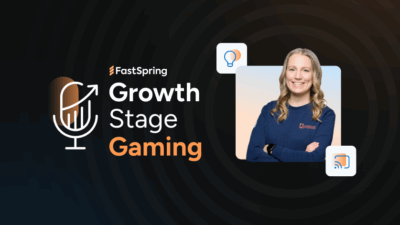The success of your online store will depend on a variety of factors. How you position your software or digital products, the utility your product provides to potential customers, and the strength of your brand are all key.
But one of the most important factors is how well your digital business gets indexed by Google’s search engine. Let’s face it, consumers are moving towards online shopping and part of this experience involves product discovery directly from the most popular search engine on the internet.
If you want your customers to find your product easily, you have to ensure that you’re optimizing your site to be as search engine friendly as possible so it can rank higher on the search result pages (SERPs).
Want to garner more clicks to your website? Follow these SEO tips below:
Focus on product discovery.
Search engines accomplish their job when they correctly return the search results that are most relevant for the user’s search query. You may be wondering, how exactly do search engines know which results to pull correctly all the time? That’s where keywords come into play!
The keywords entered in a search engine act as a conduit for users to find the information they are looking for. Results that more closely match the keywords found in the searcher’s query are then pulled by the search engines and displayed to the user.
Tip #1: Build a targeted Keyword List
It makes sense then to build out a list of keywords that you think customers would use to help discover your product. If a user is searching for photo editing software, one possible search query could be “best photo editing software 2019”. Keyword research is important because it helps guide the content you publish in order to meet users’ search intent.
When you’re building out your keyword list, it’s important to pay attention to qualities like search volume, relevance, location-based popularity, and ranking difficulty.
Remember, just because a keyword is extremely relevant doesn’t mean it’s always the right fit. One viable strategy is to focus on generating quick traffic from low competition keywords. Quickly generating traffic helps your website become established faster which means more eyeballs on your products!
Tip #2: Optimize product pages
Uplift your product descriptions with rich content like customer reviews and popular F.A.Qs! User-generated content like customer reviews and testimonials provide greater credibility around the product or services your digital business is selling which could help increase your conversion rate. Because search engines place an emphasis on matching queried keywords with the content on your site, incorporating reviews can present another opportunity to inject keywords organically on your pages.
Search engines love active content and consistently optimizing your product pages sends positive signals that the information on your site is fresh. In addition, keeping your product pages up to date helps reduce bounce rate (visitors leaving your site) by ensuring your product pages are displaying for the right search queries from the start.
Tip #3 Focus on the Long-tail
Voice search is here – which means you’ll have to worry about optimizing your SEO strategy to accommodate for natural language queries. Unlike text queries, voice search queries tend to be longer (4+ words) and are expressed in the form of a conversational question.
To stay on top of this trend, businesses must have a deep understanding of how customers are talking about their product and services and create content that can answer these conversational long-form search queries.
Tip #4 Take advantage of title and meta descriptions
One of the first places search engines look at to understand the contents of a page are the title tags and meta descriptions. Use informative and relevant keywords that people would use to find your products in the title tag and keep it under 60 characters. Your 155 character meta description is especially important since it provides a brief synopsis of what users can expect from your page.
Optimize with usability in mind.
While there are SEO best practices you can hit in order to optimize your site for search engines, you can’t forget that at the end of the day, your main focus is on the search experience of real users. The most successful digital businesses don’t just optimize their online store to perform better on search, they optimize their site to make it easier for real users to discover their products and quickly purchase.
Tip #5 Display SSL certificates
Trust is key when it comes to ecommerce, displaying SSL certificates shows your customers that your site uses secure, encrypted connections to help reduce the risk of security breaches. In fact, Google will even reward you for making sure your site is SSL certified by ranking sites with HTTPS connections higher than those without.
Tip #6 Reduce steps to checkout
In the global digital economy, modern ecommerce checkout flows must enable shoppers to buy quickly and directly from your product page. Displaying localized prices and automatically factoring local taxes removes the hassle from shopping on your site. Streamlining the number of steps required to purchase a product helps promote better web usability — all really important ranking signals that affect your visibility on the SERPs.
Generating traffic is only the beginning.
Nailing the SEO fundamentals will help your store get ranked higher by search engines and in turn, help your site get noticed by prospective customers. The next logical step is to make sure you’re increasing your conversion rate and growing your revenue by converting more site visitors into paying customers. In today’s age, providing customers with a seamless checkout experience that is tailored to their local experience is critical in driving more sales of your digital products or software-as-a-service.
Ready to see how FastSpring can help increase your average order value and drive more sales for your digital business? Click here to request your free demo today!









